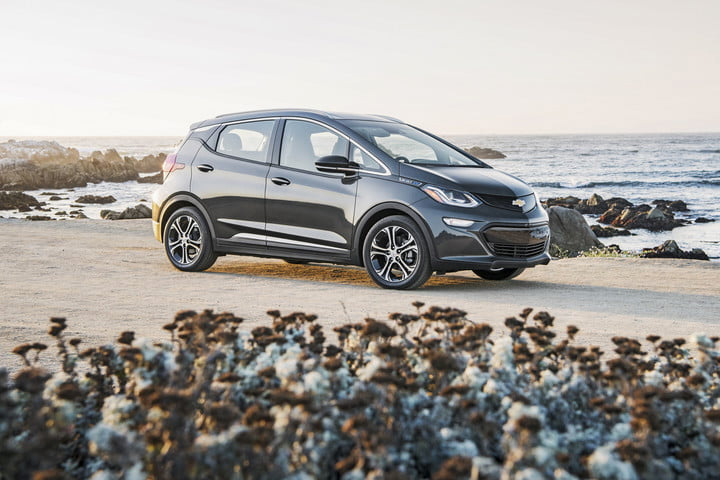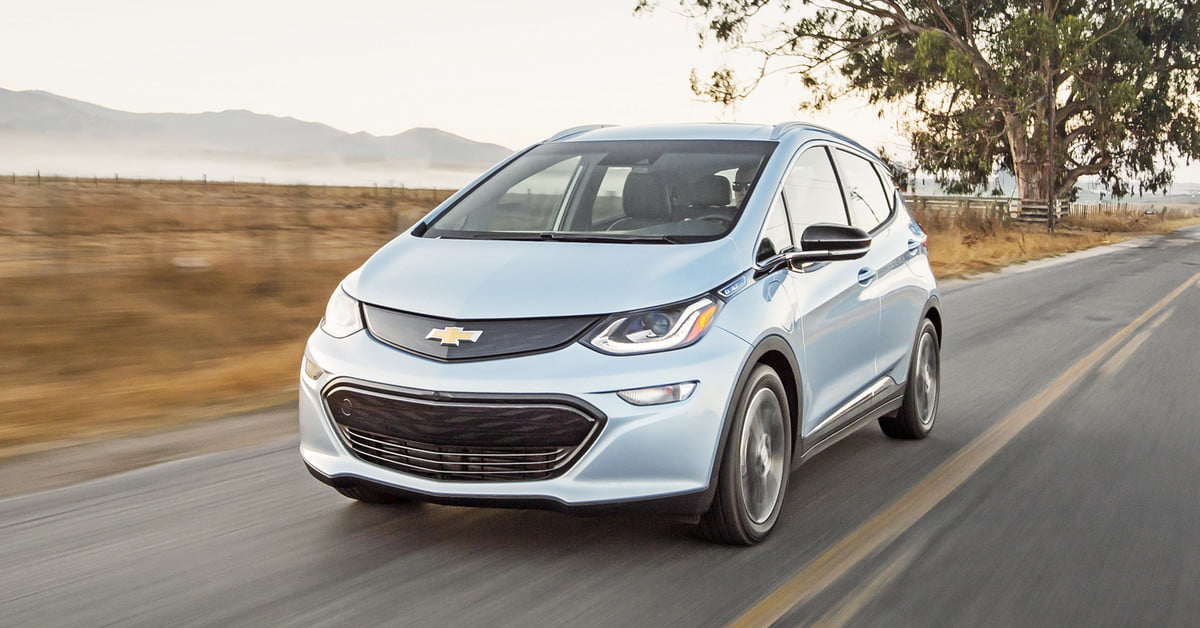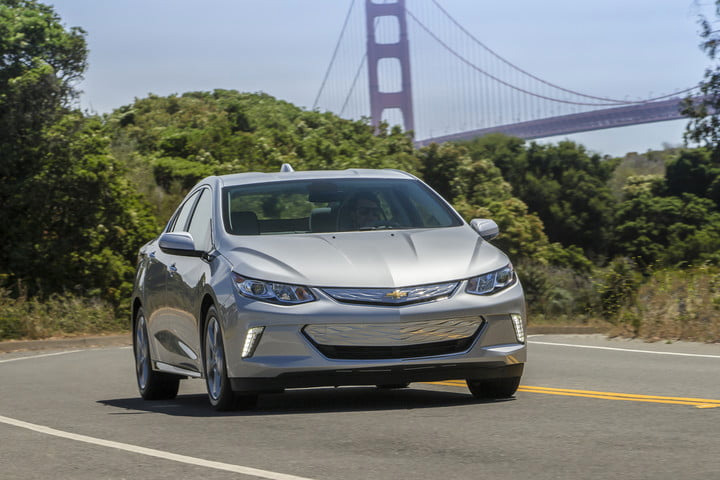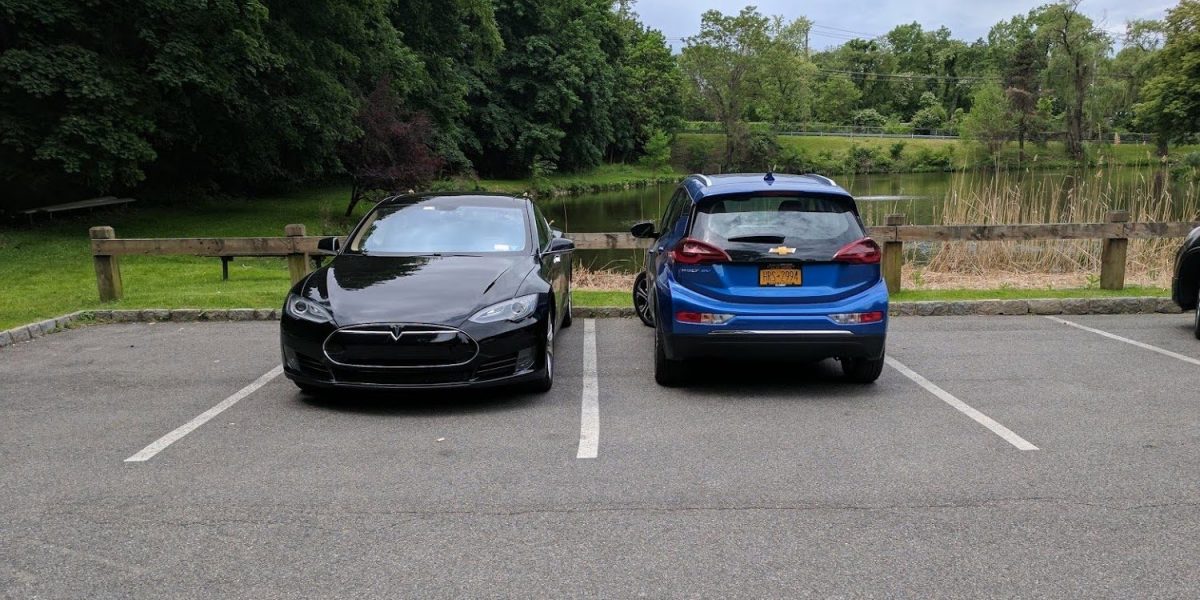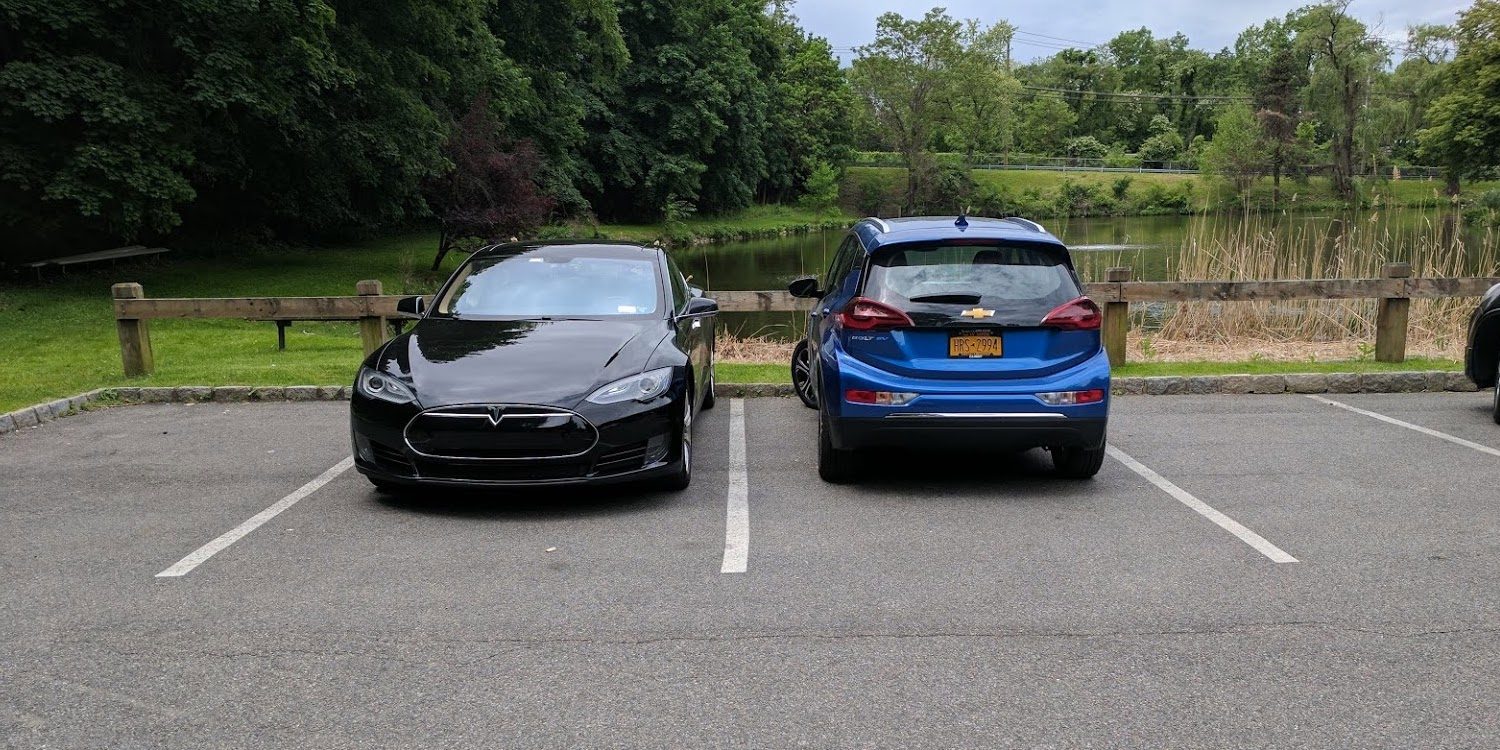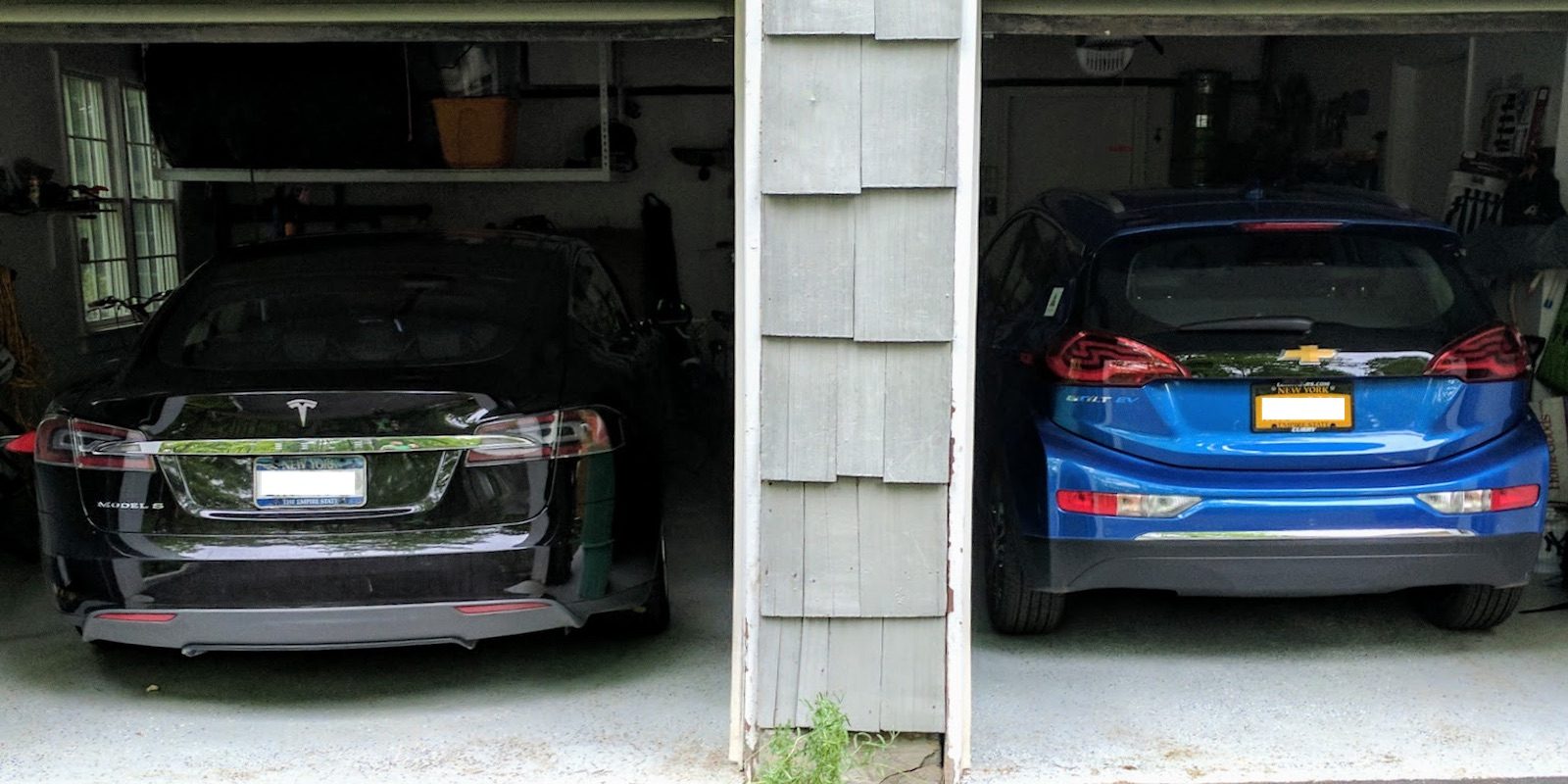Just over a year ago, I finally realized my long-time dream to purchase an affordable all-electric car with over 200 miles of range. Now that I’ve got a full year and around 8,500 miles of road behind…
Just over a year ago, I finally realized my long-time dream to purchase an affordable all-electric car with over 200 miles of range. Now that I’ve got a full year and around 8,500 miles of road behind me in the Bolt EV, let’s check in on the good, the bad, and the awesome.
Looking for your own EV? Call our Customer Care Team at 630-898-9630 or visit our showroom. Select your perfect electric vehicle on our website day or night.
One year into owning the Bolt EV as our family’s only vehicle, we are loving, it. It is peppy, smart, and comfortable. Plugging in at home has given us back so much time that used to be wasted waiting in line and filling up at gas stations. We have only had “range anxiety” once, when I was intentionally pushing the car to its limits (we’ll get into the details of that a little later). So far there have been zero mechanical issues or problems with the car. We exclusively use one-pedal driving, which took no time at all to get used to, and now just feels like the “natural” way to drive. Added bonus: since we almost never hit the brake pedal (except in reverse), the brake pads will likely last a very long time.
Much to my surprise and dismay, a year after our purchase the Chevy Bolt EV is stillthe only sub-$40,000 electric car with over 200 miles of range that you can buy and drive home today. I had expected the Tesla Model 3 to meet those criteria by now, but they’re still only shipping the tricked out models with prices in excess of $50,000. I also really thought that the new Nissan Leaf would be packing a 60kWh battery similar to the Bolt EV, giving it a similar range, but Nissan only increased the size of the Leaf’s battery to 40kWh, giving it a range boost from around 105 miles to 150 miles.
Going the distance
The subject of range is a good place to start. We took a number of long-ish trips over the last year that would not be possible in most other “mass market” electric cars, including trips from our home in Everett to Leavenworth (203 miles round trip), Vancouver, WA (195 miles one-way), Port Orchard (110 miles round trip), and La Conner, (95 miles round trip). The Bolt EV performed flawlessly every time, giving us reasonable range estimates and inspiring full confidence that we would have no problem making it to our destination.
Of course, I had to push the car to its limit at least once. On our way back from visiting my parents in Vancouver for Thanksgiving we decided it would be fun to strap a ridiculously large Christmas tree to the top of the Bolt EV. I knew that having what was essentially a huge fractal sail strapped to the roof would destroy our efficiency, but even still, I underestimated just how severe the hit would be.
We made it to our planned charging stop at the Chevy dealer in Olympia—barely. Starting with a full charge at my parents’ house, we burned through 58 kWh of the battery’s 60 kWh capacity in just 109 miles. Unfortunately, the supposed DC Fast Charger (DCFC) at the dealership was not up to full DCFC specs, and barely pumped out more amps than my Level 2 home charger. We got nowhere near the theoretical “90 miles of range in about 30 minutes of charge” that the Bolt EV is capable of on a true DCFC station. After two hours at the charger we finally had enough in the battery to make the remaining 90 mile drive home.
Fortunately, that was both the first and the last time so far that I have used any public charger for my Bolt EV, because its range has proven to be more than enough for 99 percent of the trips we take, even in the winter when the cold weather pushed the maximum range a little below 200 miles.
One frequent objection that people seem to have about electric cars is that they aren’t sufficient for road trips. I concede that point. There were two times this year that we went on road trips beyond the capability of the Bolt EV—a 570-mile one-day round trip drive to Walla Walla, and 2,000-mile 4-day round trip to Visalia, California. In total we spent about $156 to rent cars for those two trips.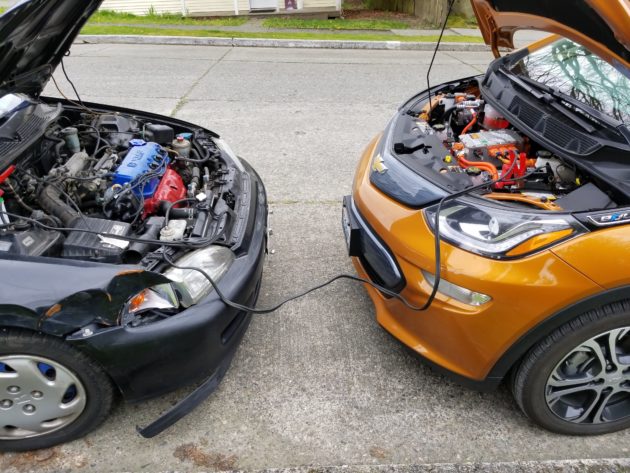
Fuel cost comparison
How did our fuel costs compare to our old gas-powered car? Our previous car was a relatively fuel-efficient 2001 Saturn SL2 that averaged around thirty miles per gallon (despite having over 200,000 miles on it). Using monthly average Seattle-area gas price data from EIA.gov, my calculations show that if we had continued driving the Saturn, we would have spent $863 to travel the same 8,700 miles that we put on our Bolt EV in its first year. Meanwhile, our actual cost of the electricity that we put into the Bolt EV was almost exactly $300. So we saved $563 in fuel alone ($407 if you subtract the rental car expenses for the road trips), plus the cost of around three oil changes and whatever other maintenance our old gas-burner would have needed.
A less fuel-efficient gas-powered car that averages around twenty miles per gallon would have cost around $1,300 in gasoline, for a savings of $1,000.
 The tax savings
The tax savings
Speaking of savings, as of right now there is still a pretty big federal income tax incentive available if you purchase most EVs. I’m the type of person who prefers to file my taxes as early as possible, so you can imagine my frustration when the IRS delayed publishing the 2017 tax year version of the EV tax credit form (Form 8936) multiple times. They eventually released it in late February and I was finally able to file my taxes. We received that sweet $7,500 EV credit in late March.
It’s also worth mentioning here that if you live in Washington State, the incentive that exempts the first $30,000 of the purchase price of an EV from sales tax is set to expire at the end of this month, so if you’re thinking about buying an EV soon you may want to do it now while you can still save up to $3,000 in Washington State sales tax.
The little things
Here are some of the cool little features that we’ve noticed in our first year of Bolt EV ownership:
- The parking brake sets itself when you shift into park if you’re stopped on a steep enough a hill.
- The volume displays on the screen closest to where you’re setting the volume—if you use the buttons on the back of the steering wheel, it displays on the driver’s screen, but if you use the center console knob, it displays on the center screen.
- When you turn on the rear window washer a small jet also washes the rear cameras.
- The on-screen guide on the reverse camera turns as you turn the wheel, which makes perfect parking ridiculously easy.
- The HVAC fans turn down automatically when you make a call or talk to Google via Android Auto (or Siri via Apple CarPlay).
- The stereo has a setting to increase volume automatically when you go faster, accommodating for road noise at high speeds.
- You can still provide a jump start to ICE cars in need (I actually did this once).
- The rear view mirror camera is super rad (and has a brightness adjustment button on the back).
- Cruise control stays “on” even when you turn off the car (why do so many cars reset cruise to “off” every time you get back in the car?!?).
- Safety feature – In “L” mode the car creeps forward if your seat belt is not buckled, making it immediately obvious that you’re still in gear if you’re about to try to get out. Also, as soon as you open the door the car will auto-shift into park.
- While plugged in to charge, you can use the app or the key fob to precondition the heat in the winter without depleting any battery.
- Parking brake auto-releases when you hit the accelerator, and auto-sets if you’re creeping forward down a hill in “L” mode with your foot completely off the pedal.
- Android Auto is super useful and after a software update is now (mostly) full-screen (previously it did not fill the width of the screen). You can jump to Android Auto by holding the “Home” button for a few seconds.
There are also a few complaints, but they are all very minor:
- The headlights are a little too bright for other drivers.
- One time we experienced a software glitch that disabled all the steering wheel buttons (cruise control, on-screen menu selection, volume). It fixed itself on the next drive.
- The stereo flips back to FM radio every time you turn on the car.
- The window control rockers have an “automatic down” mode for all four windows but, but only the driver’s window has automatic up.
- The way the My Chevrolet smartphone app calculates efficiency is stupid (they divide your miles driven by the entire amount of electricity you’ve put into the car, not just what you’ve actually used).
While the Bolt EV is great the way it comes, there were a couple of aftermarket add-ons we opted for:
- $180 – Full-coverage all-weather floor mats from WeatherTech
- $378 – Yakima roof rack system, which consists of the LP19 landing pads, Skyline Towers, 50″ CoreBars, and SKS Lock Cores
The verdict
As mentioned earlier, if you want to drive home today in a relatively affordable all-electric car with over 200 miles of range per charge, the Bolt EV is still your only choice. But just because Chevrolet is taking home a default victory in this category doesn’t mean that the Bolt EV is not a worthy competitor. I’ve been seeing more and more of them on the road lately, so the word must be getting around. In retrospect, I’m glad we bought the Bolt EV, and I’m looking forward to driving it for many more years to come.
Source: One year with the Chevrolet Bolt EV: Takeaways from my immersion into all-electric driving


